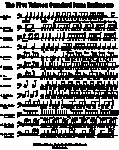I'm not a drummer but appreciate drums more than any other instrument when listening to music. Actually, I often find myself focusing on only the drums when they're done well.
I'm wondering what you call this 'technique' - Martin Lopez uses it A LOT. I'm not sure if it's an actual technique, or just very tasteful and dynamic use of ghost notes on the snare, but would appreciate some clarification.
You can hear it quite a bit in the following groove... first heard at about 3:44, then it's continuous from about 4:00 - 5:00. Off topic but worth mentioning is how awesome that 'every other beat' ride is from about 5:00 to 5:20!
http://www.youtube.com/watch?v=6vjg7dQhARY
You can also hear it here starting around 3:40 in another gorgeous groove:
http://www.youtube.com/watch?v=UR6SQPkK4bA
I'm wondering what you call this 'technique' - Martin Lopez uses it A LOT. I'm not sure if it's an actual technique, or just very tasteful and dynamic use of ghost notes on the snare, but would appreciate some clarification.
You can hear it quite a bit in the following groove... first heard at about 3:44, then it's continuous from about 4:00 - 5:00. Off topic but worth mentioning is how awesome that 'every other beat' ride is from about 5:00 to 5:20!
http://www.youtube.com/watch?v=6vjg7dQhARY
You can also hear it here starting around 3:40 in another gorgeous groove:
http://www.youtube.com/watch?v=UR6SQPkK4bA


